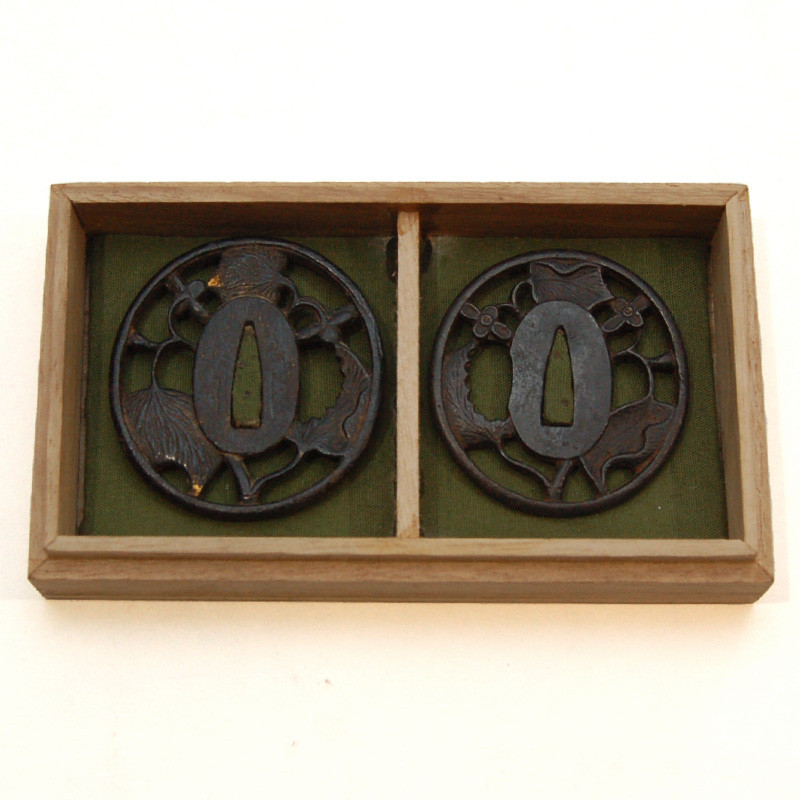






More informations about this product
| Tsuba Daitō | Tsuba Shotō | |
|---|---|---|
| External dimensions | 6 cm x 5.52 cm | 5.68 cm x 5.38 cm |
| Nakago - Ana Dimensions | 0.58 cm x 2.2 cm x 0.22 cm | 0.58 cm x 2 cm x 0.22 cm |
| Thickness | 0.42 cm | 0.41 cm |
| Weight | 50 g | 45 g |
| Description | Description : Tsuba set for Wakizashi in Iron, Maru-Gata shape (round), in Niku Bori Sukashi Bori (partial openwork), having for decoration the Maruni Mitsubaaoi (circle surrounding the 3 leaves of Aoi (Ginger asarum), symbol of Tokugawa). Partial inlays remaining in gold with Hira Zogan technique. Special Features: Tokugawa (Matsudaira) Clan Mon (Emblem), Aoi Mitsuba (三葉葵) or “Triple Hollyhock”. Often associated and translated as «hollyhock rose pattern», this Mon actually symbolizes Asarum ginger leaves. The full name «Mitsu Ba Aoi» consists of three parts, Mitsu meaning 3, Ba meaning leaf and Aoi, ginger. The symbolism of the three leaves is also related to the «Gosanke Tokugawa», the three houses of the Tokugawa. These are the three branches of the Tokugawa clan, the three sons of Ieyasu Tokugawa, Yoshinao (Owari Province), Yorinobu (Kii Province) and Yorifusa (Mito Province). This Mon has become easily recognizable, a symbol not only of the clan, but of all Tokugawa shogunate. This Mon is usually used to suggest the moment of the Edo period history. During the Bakumatsu period, it was used to identify characters loyal to the shogunate, in opposition to my chrysanthemum motif is symbol of imperial family and loyalists. |
|
Share your opinion
error Your review appreciation cannot be sent
feedback Report comment
check_circle Report sent
error Your report cannot be sent